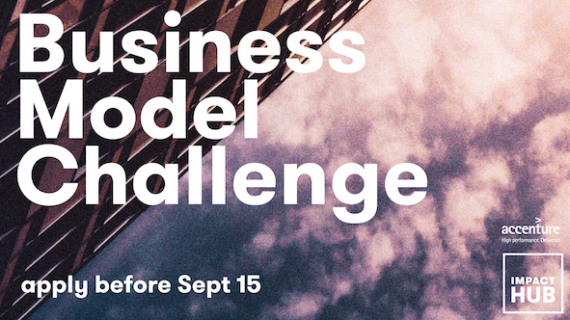As we get closer to the 13th edition of our Business Model Challenge (BMC) accelerator, which already helped more than 270 startups develop a better business model, here’s what you can learn from the top 3 finalists of the previous BMC edition. So read on, get inspired and apply before 15 September at https://bit.ly/BMC2017AMS 15 Sep to take your startup and impact to the next level!
1. Set your story straight
Throughout the past 12 editions of the Business Model Challenge and other Impact Hub acceleration programmes, we learned that an honest, powerful story can convinces customers to choose the products or services of a startup driven to make positive impact over those of a ‘regular’ business.
Sharing the impact story of product or service story can also help you reach a larger audience and ensure you stand out amongst your competitors. And it also gives you the chance to raise awareness of the societal problem your enterprise wants to fix.
Take the winner of our 12th Business Model Challenge, The Girl and the Machine. Founder Rosanne van der Meer makes 3D printed clothes using a custom-built machine. Her company’s story revolves around the urgent need to end the massive amount of waste and pollution caused by the global fashion industry. By ‘printing’ personalised, durable apparel, The Girl and the Machine gives its clients a the opportunity to be less wasteful by only buying fashion they both need and want.
2. Lock down your ideal pricing
Office and home aquaponics systems maker Riverfood – and Business Model Challenge top 3 finalist – experienced first hand the need to define your ideal customer and find out how much they are willing to pay for your product. And there are 3 steps to figuring out how much your product should cost:
- Identify the price at which you buy the goods needed to make your product
- Examine what other companies – including your competitors – charge for products with the same target group
- Define what extra (social) value your product adds.
An easy way to identify the the price range for your product is by looking using the “Rocket, Cornetto, Magnum” analogy to decide if your product should be priced as luxury (Magnum), middle range (Cornetto) or highly affordable (Rocket). But, as Riverfood helps people grow vegetables and fish simultaneously at home as well as public spaces, deciding on either of these three proved to be quite the challenge. The company’s aquaponics systems are expensive and a thus hard sell.
Yet founder Linda Grotenbreg found a way forward: leasing, which means that the company still owns and provides maintenance for each system. Although the costs are initially high, this circular economy-inspired pricing model helps Linda build strong relationships with her customers, which leads to a secure and stable revenue stream.
Linda encourages you to talk to a financial expert and see how you are able to earn back your investments. Go to http://bit.ly/FromIdealismtoProfit to read how support from her Accenture mentor made all the difference.
3. Join forces with perfect partners
Most Impact Hub members readily admit that the right mix of corporate, governmental and nonprofit partners is key to the success of their social startups, so make sure to look for strong partnerships that are relevant to your social mission as soon as possible.
These partners can help support the development of a viable, future-proof business. And often they have the right resources to help your social startup amplify its positive impact.
Take Business Model Challenge top 3 finalist House of Impact, whose Heroes of Football inclusion project is run in collaboration with partners such as the KNVB and UEFA. Founder Marieke Slinkert shares how you could also land such big name partners:
“Dive into the world of your potential partners and figure out what kind of challenges they are facing. Present your product or service as the perfect solution to their problems. And make sure to prepare your meeting really well; you need to clearly define how your potential partner could contribute to your startup”, Marieke concludes.
If you are also an ambitious entrepreneur who’s ready to save time and money while developing a better business model and growing your positive impact, apply before 15 September at https://bit.ly/BMC2017AMS for the autumn edition of Impact Hub's Business Model Challenge!





